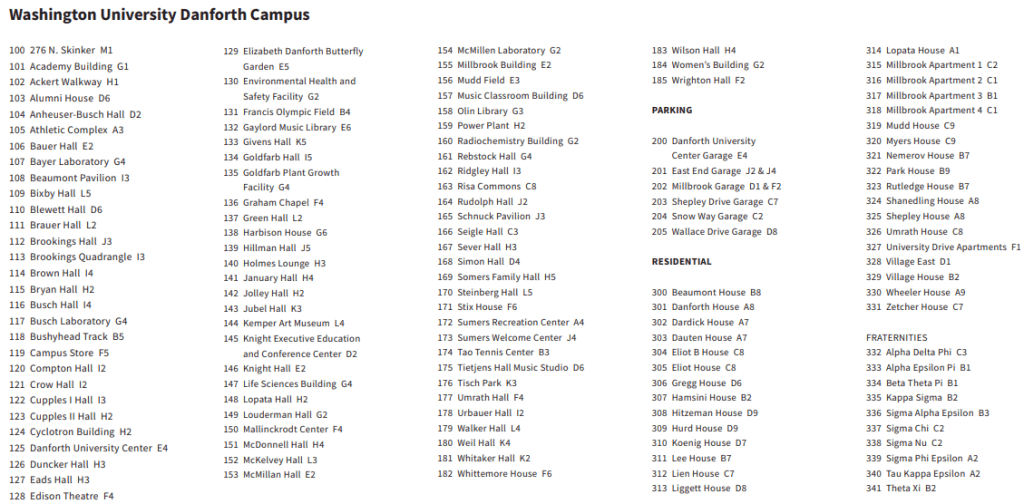Sugarberry
Arbor Walk #154, TreeKeeper ID #1620

This tree was grown from a seedling descended from the previous Missouri state champion Sugarberry that lived in Kirkwood Park. That tree was over 150 years old when it came down, but it lives on in our Sugarberry next to Green Hall. This native tree performs well in urban conditions and is easily identified by its distinctive corky bark; however, other relatives that are native to Missouri have very similar bark, including the Common Hackberry.
The fruit produced by this species are often quite sweet (said to be sweeter than its relatives), which is what has earned the tree its common name. Ripening occurs in the fall, and the fruit is edible to both humans and local wildlife. It is more resilient to common diseases, but less able to manage highly frigid winters than its northern relative.
More information about the Sugarberries in our Arboretum here!


GPS Coordinates
N/A
Percent Concrete
N/A
Distance to Buildings
| Year | Close Building #1 | Close Building #2 | Close Building #3 |
|---|---|---|---|
Distance to Other Species
| Year | Close Species #1 | Close Species # 2 | Close Species # 3 |
|---|---|---|---|
Standard Measurements
| Year | Height (m) | DBH (cm) | Crown Diameter N-S (m) | Crown Diameter E-W (m) | Average Crown Diameter (m) |
|---|---|---|---|---|---|
Nests and Pests
| Year | Description |
|---|---|
Leaf Identification
The leaves of the Sugarberry are narrowly ovate shaped, and the venation is pinnate, with three main veins all pointing upwards at acute angles from each other. They can have entire margins or be serrated on the upper half of the leaf. Typically about 2″ to 5″ long, the leaves have an acuminate tip and an uneven base. They can be slightly pubescent, but are mostly smooth. They are usually a light green color but turn yellow in the fall. The leaves are alternately arranged on the stem.
Twig and Bud Identification
The twig of the Sugarberry is typically zig zag, reddish-brown, and have lighter lenticels (pores). The buds tend to be appressed, triangular, and tan. It lacks a true terminal bud, but it does have a pseudoterminal bud. The pith is chambered at the nodes.
Bark Identification
The Sugarberry has distinctive corky bark. The corks are usually spread out and are ringed protrusions. The bark is light brown-gray in color.
Fruit Identification
The fruit of the Sugarberry are round drupes that each contain one seed. It is green, then orangish-red, and finally dark purple at maturity. They are edible. The fruits ripen in the fall.
Flower Identification
The Sugarberry’s flowers are very small, usually only about 1/8″ long. They are light green and are produced on stalks at the leaf axils. They can produce perfect (male and female in the same flower) flowers, but if not, male flowers are in clusters while female flowers are solitary. The flowers bloom throughout the summer.
ID Key Tips
- The Sugarberry can be very easily confused with the Hackberry. The Sugarberry has narrower leaves and smooth leaf margins, while the Hackberry has wider leaves with serrated leaf margins. The Sugarberry also has sweeter-tasting fruits, although we don’t recommend you eat the berries as a way of differentiating the species!






